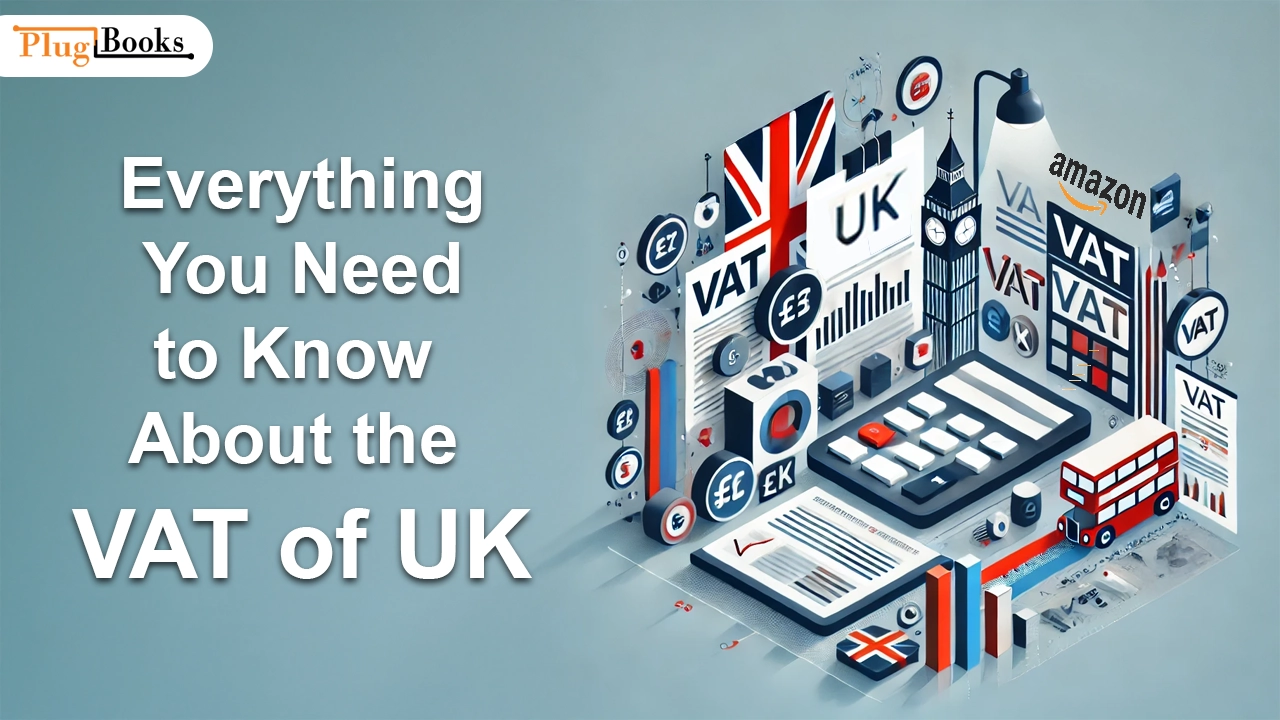VAT of UK is crucial whether you have a firm there or intend to grow to that nation. Value Added levy, or VAT, is a levy on most products and services. IT influences company operations greatly in the United Kingdom. Whether you run a big company or a small firm, you need to know how the VAT of UK operates. It is to guarantee compliance and prevent financial mistakes. This tutorial will go over the several rates, percentage of VAT in UK, and what you need to know to properly calculate VAT and keep compliant.
What is VAT of UK?
VAT of UK, or consumption tax applied to most products and services sold there, is Acting on behalf of the government, businesses act as tax collectors adding VAT to the cost of goods and services sold. UK’s VAT is applied at several rates based on the kind of goods or service. Knowing the percentage of VAT in UK and how to manage VAT payments is absolutely essential for business owners to guarantee seamless operations.
Different Rates of VAT in the UK
VAT of UK is not a tax fit-for-all kind of levy. Rather, distinct VAT rates are charged to various goods and services. Allow me to dissect these rates:
- Standard Rate of VAT: Most goods and services in the UK fit the 20% VAT range. Applying to a wide spectrum of products and services, this is the typical VAT rate.
- Reduced Rate of VAT: For some necessary goods, the rate of vat in the uk is lowered to 5%. This covers various house improvements, kids’ car seats, and energy-saving materials. These products have a lower percentage of VAT in UK to help them be more reasonably priced.
- Zero Rate of VAT: Though they are formally part of the VAT system, some items and services are totally free from VAT in the conventional sense. This covers food, books, and kid’s clothes—all taxed at a 0% VAT rate. Although you pay VAT at the zero rate officially, these items are not subject to any actual tax.
- Exempt Goods and Services: Some services, including insurance and healthcare, are totally VAT free. These services are not included by the VAT system, hence companies are not obliged to charge VAT on them or pay VAT on connected expenses.
Knowing this will help you to make more wise company judgments.
How to Calculate VAT of UK for Your Business
Calculating VAT gets simple once you know the VAT of UK rates. For instance, you would figure the VAT if you sold a good for £100 and the rate of VAT UK is 20%.
- £100 x 20% yields £20 (VAT).
- £100 plus £20 comes to £120, the customer’s whole purchase cost.
For companies which register for VAT, the VAT you charge consumers is not the whole amount you pay the government. You can reclaim the VAT you pay on business-related expenses. Keeping accurate records is key to managing VAT efficiently and ensuring you’re not overpaying.
Who Needs to Register for VAT in the UK?
Not all businesses are required to register for VAT in the UK. If your turnover exceeds £85,000, you are required by law to register for VAT. Even if your turnover is lower, you can choose to voluntarily register for VAT. Voluntary registration allows you to reclaim VAT on business-related purchases and may also be useful if you work with larger clients who require VAT invoices.
Once your company is VAT-registered, you will have to routinely pay VAT you owe and file VAT returns with HM Revenue & Customs (HMRC). Maintaining current on VAT of UK as well as any changes to VAT rates or registration procedures is absolutely vital.
If you want to Register for VAT, Click here!
How VAT Affects Consumers and Businesses
UK VAT influences consumers as well as companies. Pricing policies for companies depend on knowing the rate of VAT UK and the percentage of VAT in UK. Companies gather VAT from consumers on behalf of the government and might be able to recover it for expenses connected to their operations.
VAT drives many goods and services’ prices higher for customers. But many basic needs are either exempt or charged at a lower VAT rate, which makes buying those things more reasonably priced.
As a business owner, it’s important to factor VAT into your pricing strategy, ensuring you cover the cost of VAT while remaining competitive in the market. Keep in mind that your customers may expect clear information about how VAT is applied to their purchases.
Staying Updated on VAT Changes
From time to time, the percentage of VAT in UK varies, which might influence operations and pricing in your company. For instance, VAT rates could be changed to boost expenditure in times of economic crisis while the government might raise VAT rates to generate income in times of economic development.
Keeping current on the rate of VAT in the UK guarantees that your company stays compliant and prevents expensive errors. To stay current with changes to VAT rules, routinely search for updates from HMRC or see a tax advisor.
Conclusion
Any company doing business in the United Kingdom must first grasp the VAT there. Whether you are selling goods or services you should know the vat. You should be aware of the relevant percentage of VAT in UK and rate of VAT UK. Confidently negotiate the UK tax system by keeping educated, accurately computing VAT, and making sure your company is registered. Maintaining current with VAT of UK will also enable you to seize possible tax-saving possibilities including VAT recovery on business purchases.
Keeping current with VAT of UK and knowing the amount of VAT in the UK will help you to make sure your company stays compliant with tax laws. This information will enable you to make wiser financial judgments and pricing decisions, therefore safeguarding your bottom line and lowering your chance of expensive blunders.
Join PlugBooks and enjoy Free Trial




